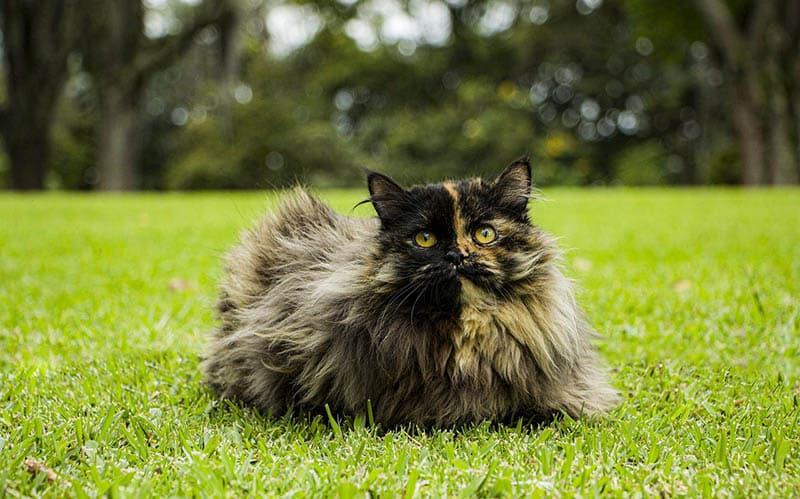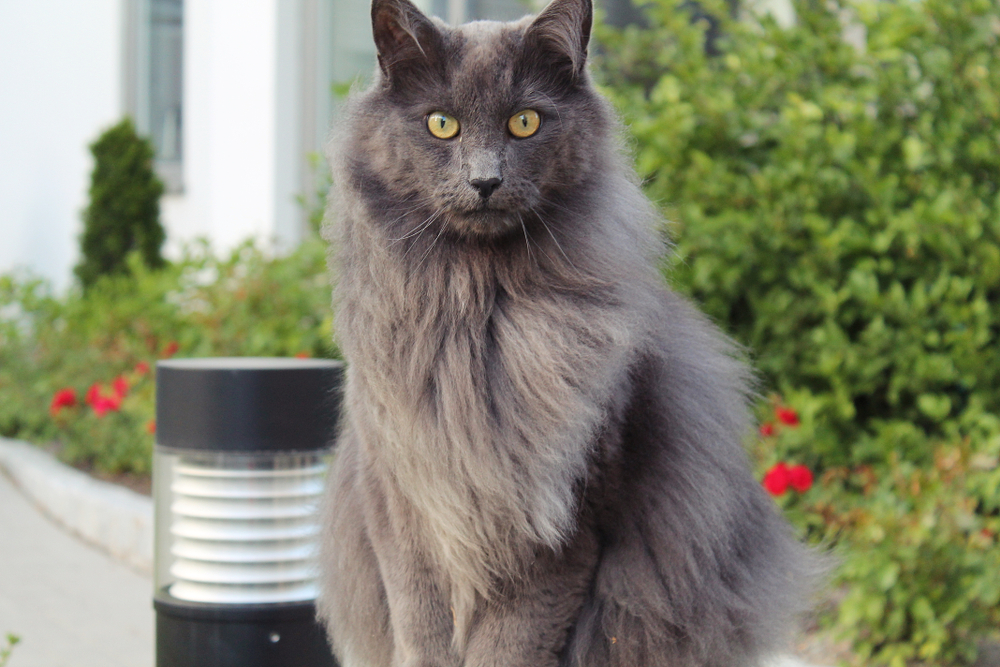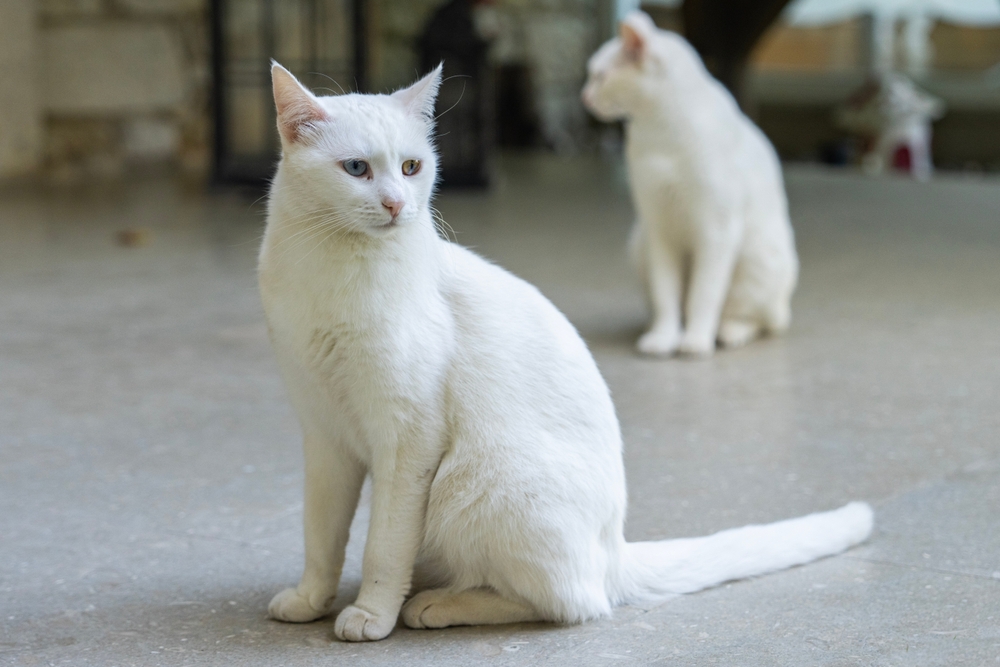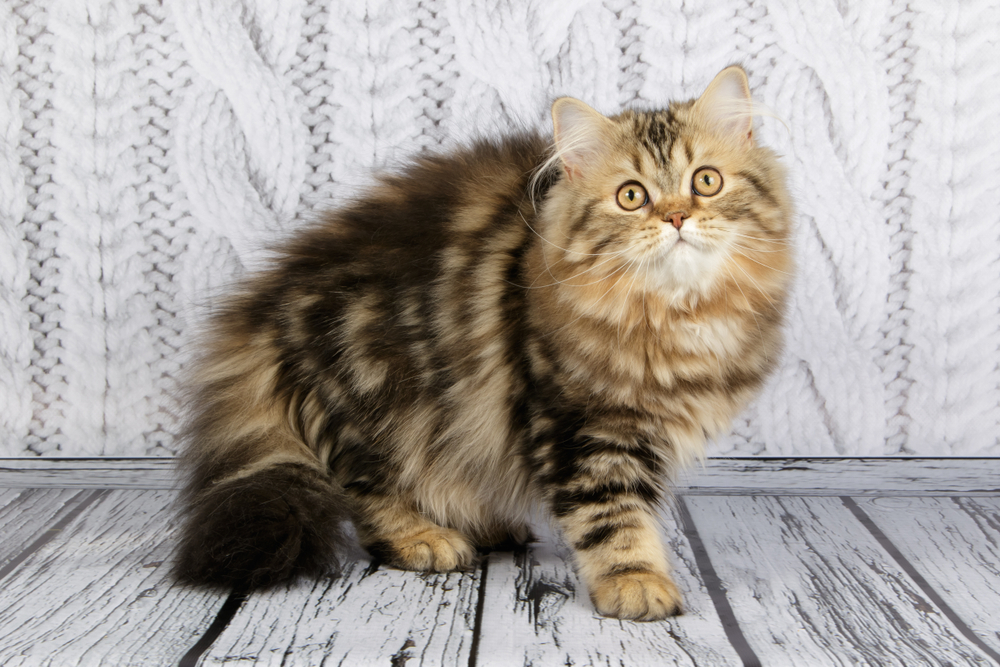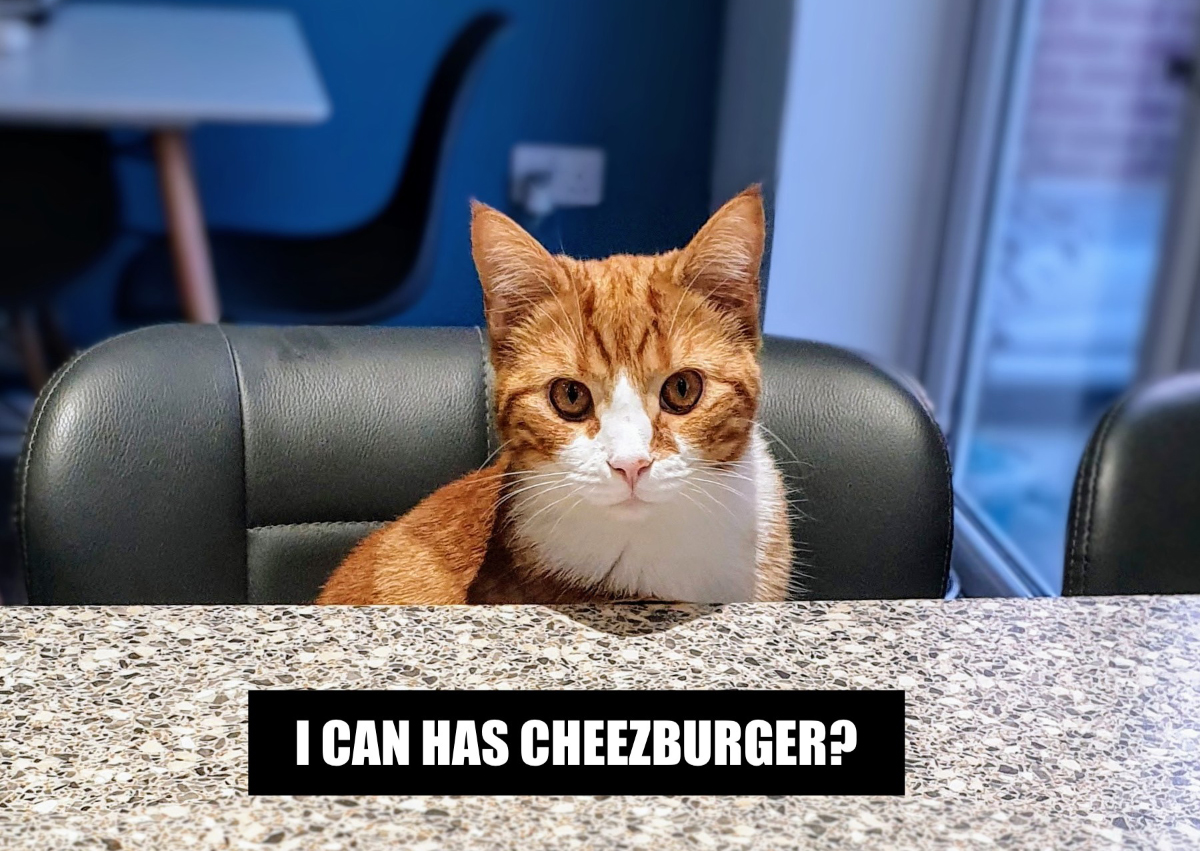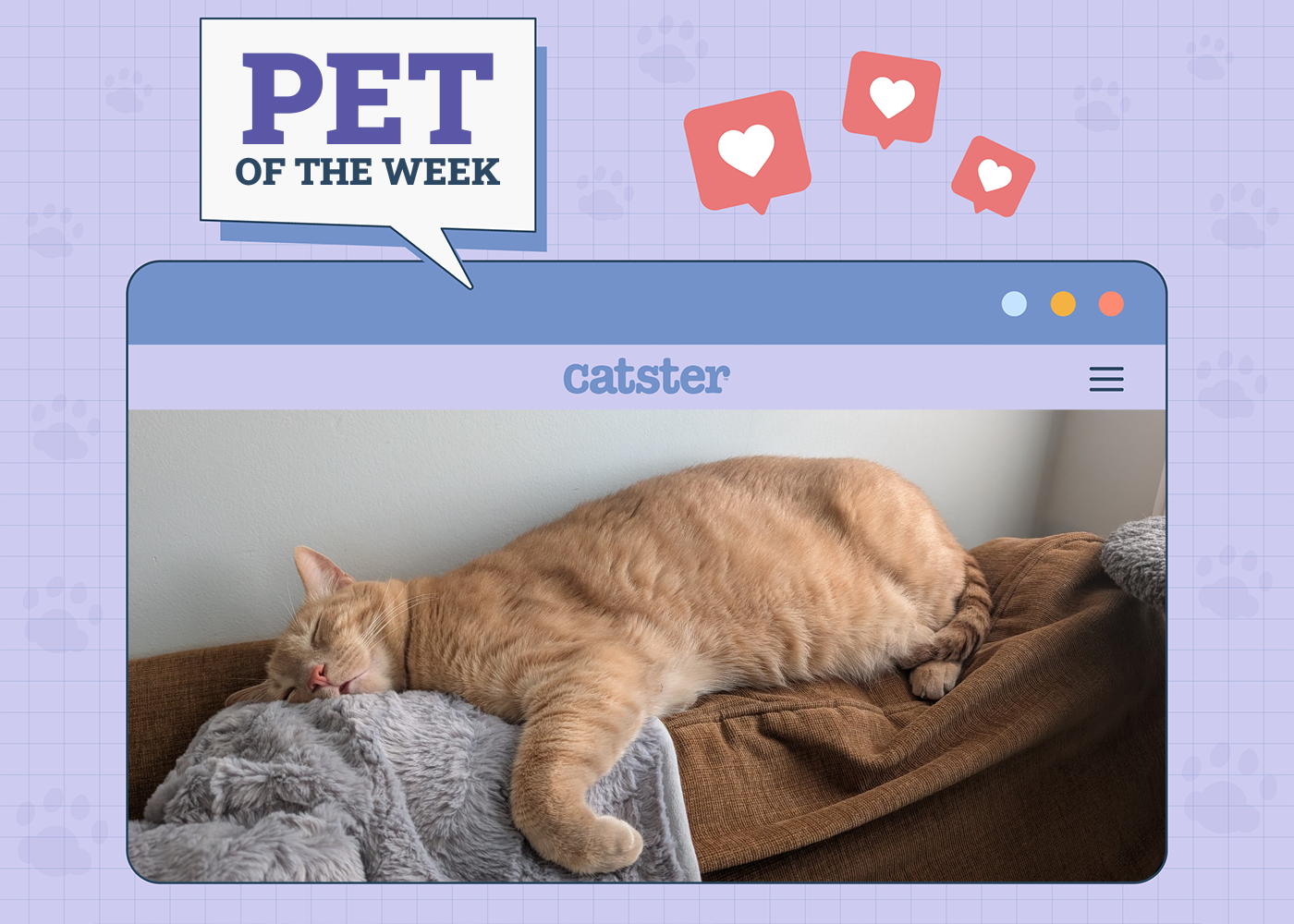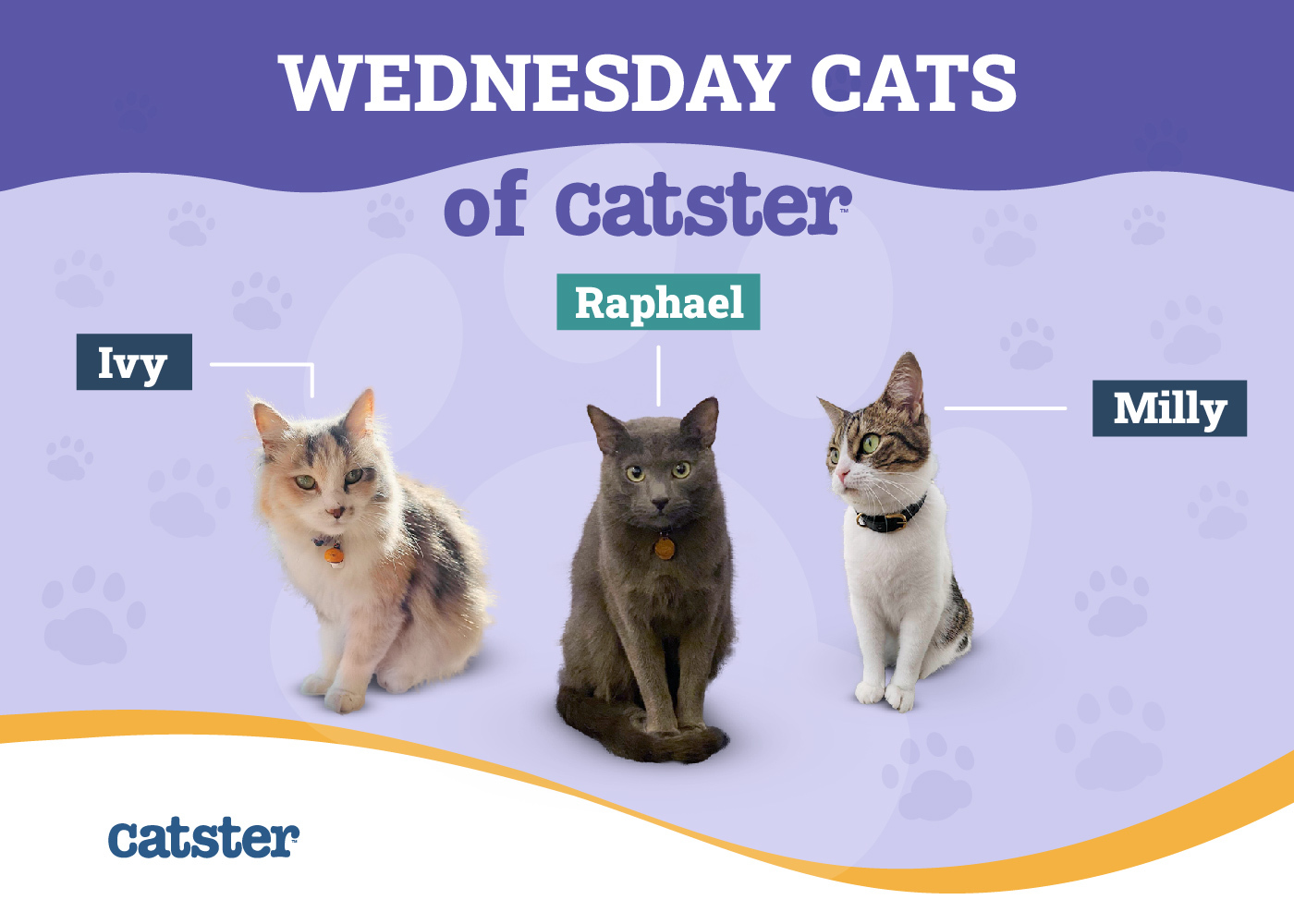Click to Skip Ahead
Tortoiseshell Persians are a unique variety of Persian cats named for their multi-colored coat that resembles a tortoiseshell. Known as “torties,” Tortoiseshell Persians have a stunning marble pattern on their long, fluffy coats, making them a popular choice for a purebred cat.
Breed Overview
Height:
10–15 inches
Weight:
7–13 pounds
Lifespan:
10–13 years
Colors:
White, red, cream, black, blue, chocolate, lilac, silver, golden, tortoiseshell, blue-cream, tricolor, sable, tortoiseshell, bicolor, tricolor, tabby, smoke, shaded, Himalayan
Suitable for:
Families or singles in a quiet household
Temperament:
Calm, affectionate, laidback, playful, gentle, quiet
Tortoiseshell Persian Cat Characteristics

The Earliest Records of Tortoiseshell Persian Cats in History
It’s unclear when long-haired cats first appeared in history. The African wildcat, an ancestor of domestic cats, has no long-haired specimens. The first documented ancestors of the Persian Cat were imported from Persia into the Italian Peninsula in 1620 and from Turkey into France around the same period. Known as Khorasan cats, these cats were gray- or white-coated.
The breed still gained popularity throughout Great Britain for its luxurious appearance. Genetic research indicates that modern Persian cats are related to the cat breeds of Western Europe, not the Near East like their predecessors.
The Tortoiseshell markings have a murky history. Leonard Doncaster proved that tortoiseshell is a female heterozygote of orange and black at the start of the 21st century, but they appeared before then. Tortoiseshell patterns can appear in many breeds, but like calico markings, it’s almost always in females.
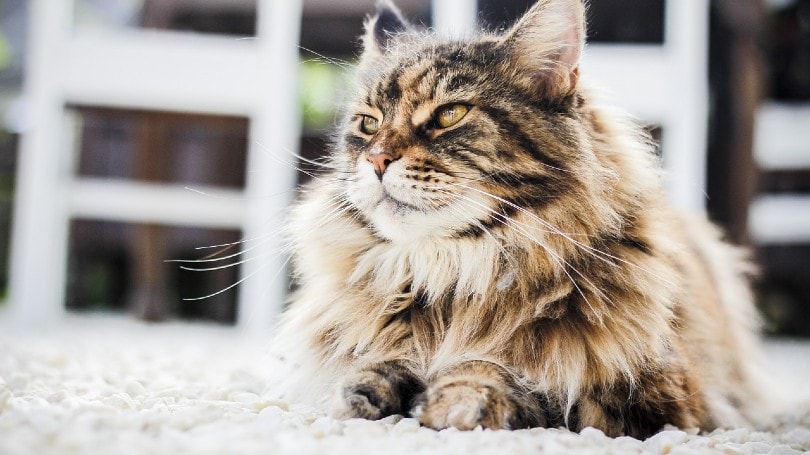
How Tortoiseshell Persian Cats Gained Popularity
Persian cats quickly gained popularity for their distinctive and luxurious appearance. These cats became popular in the UK before expanding to North America. In 2008, the Persian was the most popular breed in the US. It now lags behind the British Shorthair, Ragdoll, Siamese, Maine Coon, and Burmese in the UK.
There are many popular color varieties in Persian cats, including pointed colors like seal, blue, and flame. Tortoiseshell is not one of the most popular varieties, but tortie point, a tortoiseshell point pattern, is. Overall, tortoiseshell is a desirable color for its unique look and relative scarcity, especially for male tortoiseshell cats, which are exceedingly rare.
Formal Recognition of the Tortoiseshell Persian Cat
The first Persian cat was presented at an organized cat show in 1871 in the Crystal Palace in England. The Persian became popular, leading breeders to differentiate the breed from the similar Angora. The first breed standard was issued in 1889 by Harrison Weir, a cat show promoter. He established the Persian as different from the Angora with its large head, less-pointed ears, fuller coat, and longer tail.
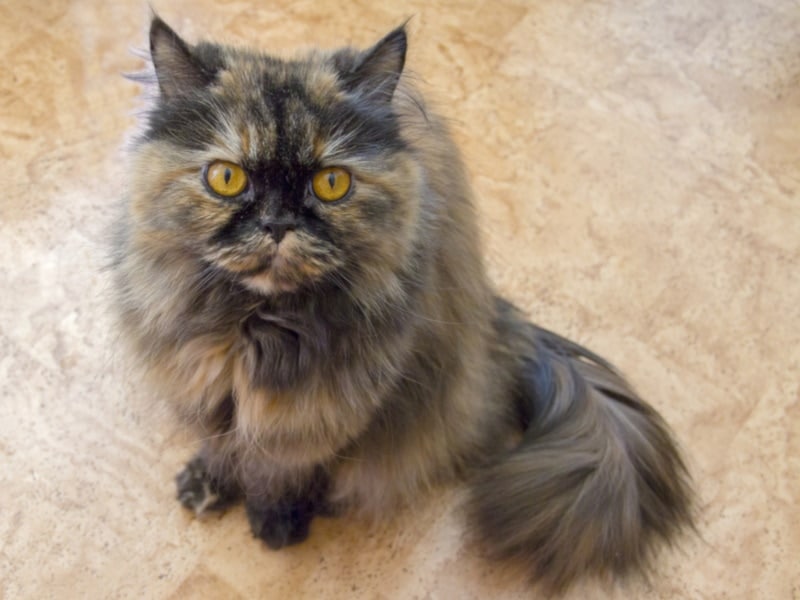
Since then, both Angoras and Persians have been crossbred, creating improvements in both breeds and a range of varieties. The Peke-face and ultra-typing Persians, like Pekingese dogs, were popular before their serious health issues were recognized. Himalayans, Exotic Shorthairs, Chinchillas, and toy and teacup sizes are also popular among cat owners.
Tortoiseshell Persians and some variants are recognized by The Cat Fanciers’ Association and other major cat associations like The International Cat Association.

Top 3 Unique Facts About Tortoiseshell Persian Cats
1. Tortoiseshell Cats Are Lucky
In the folklore of several cultures, Tortoiseshell cats are believed to be good luck. In Ireland, Tortoiseshell cats bring luck to owners, and in the US, these cats may be referred to as “money cats.” In Japan, they’re believed to bring good luck against shipwrecks. Other cultures interpret the Tortoiseshell cat as a sign of bad luck, however, such as England.
2. Tortoiseshell Owners Believe Their Cats Have “Tortitude”
One study found that Tortoiseshell cat owners believe their cats have “tortitude,” or increased attitude. There’s little evidence suggesting this is based in fact, however—it’s merely the perception of cat owners.
That said, a 2015 study from the University of California, Davis School of Veterinary Medicine established links between a tortoiseshell pattern and a cat’s likelihood to hiss, bite, chase, slap, or scratch. Another study in 2016 showed an association with increased aggression and prey drive. More research is needed to find a definitive link.
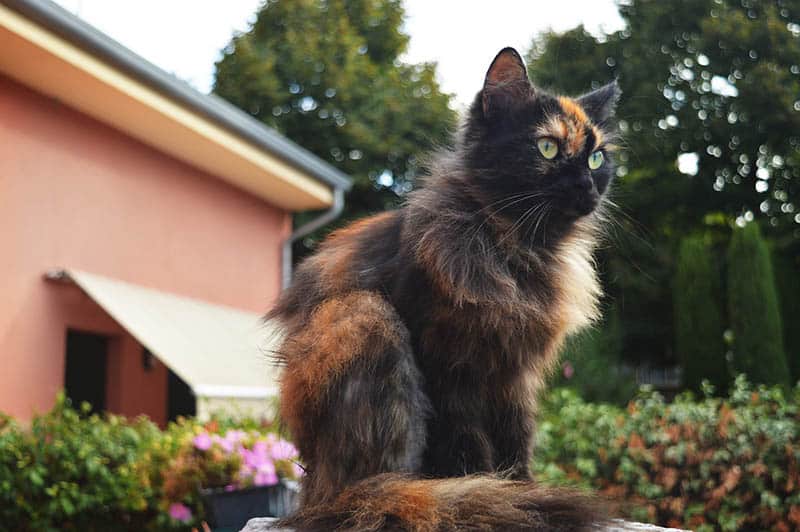
3. Persian Cats Are Frequent Art Models
The Persian cat has been featured in art for centuries. One of the most popular paintings of a Persian is “White Persian Cat” by artist Warren Kimble. The “World’s Largest Cat Painting” also sold at auction for nearly $1 million.

Does the Tortoiseshell Persian Cat Make a Good Pet?
Other than possible “tortitude,” the Tortoiseshell Persian cat makes a great pet. These cats are generally quiet, placed, and well-suited to apartments and mellow environments. Persian owners also consider their cats more affectionate and friendlier than other breeds but note that they’re vocal and fussy about food.

Conclusion
Tortoiseshell Persian cats are a beautiful variety of the popular Persian cat breed. Though Tortoiseshell patterns can appear on many cat breeds, the striking markings look particularly attractive on Persians because of their long and luxurious coats.
See also:
- 18 Persian Cat Colors & Patterns (With Pictures)
- Black Persian Cat: Facts, Origin & History (with Pictures)
- How Much Does a Tortoiseshell Cat Cost? Updated Price Guide
Featured Image Credit: andres felipe Aristizabal, Pixabay

